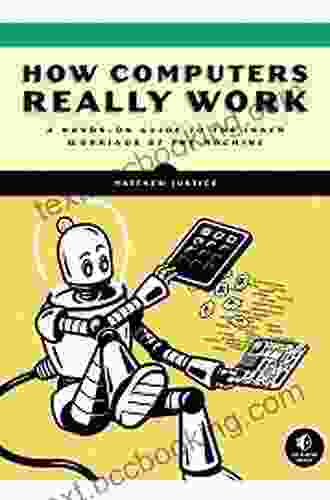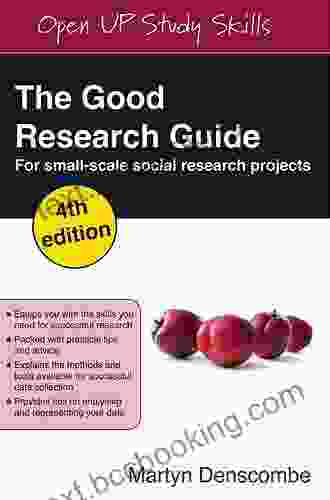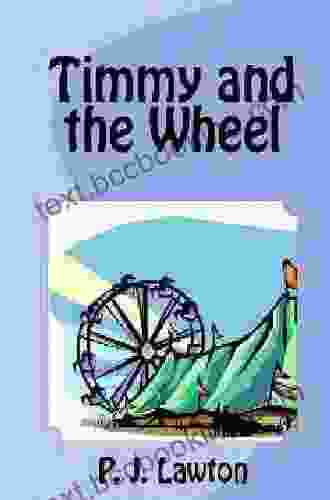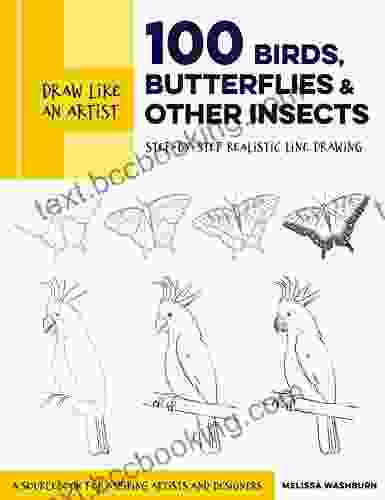How Computers Really Work: Unveiling the Secrets of These Digital Marvels

Computers have become an indispensable part of our lives. They power everything from our smartphones to our cars, and they are essential for businesses of all sizes. But how do computers really work? Most people have a general idea of what computers do, but few understand the inner workings of these complex machines.
4.9 out of 5
| Language | : | English |
| File size | : | 28836 KB |
| Text-to-Speech | : | Enabled |
| Screen Reader | : | Supported |
| Enhanced typesetting | : | Enabled |
| Print length | : | 393 pages |
In this comprehensive guide, we will explore the fundamental principles of computer architecture, hardware, and software. We will learn how computers store and process information, how they communicate with each other, and how they perform the tasks that we rely on them for every day.
Computer Architecture
The architecture of a computer refers to the way in which its hardware components are organized and interconnected. The basic components of a computer are the processor, memory, storage devices, and input/output devices.
- Processor: The processor is the brain of the computer. It is responsible for executing instructions and performing calculations.
- Memory: Memory stores the instructions and data that the processor is currently working on.
- Storage devices: Storage devices store data that is not currently being used by the processor. Examples of storage devices include hard drives, solid-state drives, and USB flash drives.
- Input/output devices: Input/output devices allow the computer to communicate with the outside world. Examples of input/output devices include keyboards, mice, monitors, and printers.
Computer Hardware
Computer hardware refers to the physical components of a computer. The hardware components of a computer include the motherboard, processor, memory, storage devices, and input/output devices.
- Motherboard: The motherboard is the main circuit board of a computer. It connects all of the other hardware components together.
- Processor: The processor is the brain of the computer. It is responsible for executing instructions and performing calculations.
- Memory: Memory stores the instructions and data that the processor is currently working on.
- Storage devices: Storage devices store data that is not currently being used by the processor. Examples of storage devices include hard drives, solid-state drives, and USB flash drives.
- Input/output devices: Input/output devices allow the computer to communicate with the outside world. Examples of input/output devices include keyboards, mice, monitors, and printers.
Computer Software
Computer software refers to the programs that run on a computer. Software is divided into two main categories: system software and application software.
- System software: System software is responsible for managing the hardware and software resources of a computer. Examples of system software include operating systems, device drivers, and utility programs.
- Application software: Application software is used to perform specific tasks, such as word processing, spreadsheet calculations, and web browsing. Examples of application software include Microsoft Word, Excel, and Chrome.
How Computers Work
Now that we have a basic understanding of computer architecture, hardware, and software, we can explore how computers actually work.
When you type a document in a word processor, the software sends instructions to the processor. The processor then executes the instructions and stores the data in memory. When you save the document, the data is transferred from memory to a storage device.
When you open the document again, the data is transferred from the storage device to memory. The processor then executes the instructions and displays the document on the screen.
Computers are complex machines, but they are based on a few simple principles. By understanding these principles, you can gain a deeper appreciation for the power of computers and how they can be used to improve our lives.
If you are interested in learning more about how computers work, I encourage you to read the book "How Computers Really Work" by Matthew Warren. This book is an excellent resource for anyone who wants to understand the inner workings of these fascinating machines.
4.9 out of 5
| Language | : | English |
| File size | : | 28836 KB |
| Text-to-Speech | : | Enabled |
| Screen Reader | : | Supported |
| Enhanced typesetting | : | Enabled |
| Print length | : | 393 pages |
Do you want to contribute by writing guest posts on this blog?
Please contact us and send us a resume of previous articles that you have written.
 Book
Book Novel
Novel Page
Page Chapter
Chapter Text
Text Story
Story Genre
Genre Reader
Reader Library
Library Paperback
Paperback E-book
E-book Magazine
Magazine Newspaper
Newspaper Paragraph
Paragraph Sentence
Sentence Bookmark
Bookmark Shelf
Shelf Glossary
Glossary Bibliography
Bibliography Foreword
Foreword Preface
Preface Synopsis
Synopsis Annotation
Annotation Footnote
Footnote Manuscript
Manuscript Scroll
Scroll Codex
Codex Tome
Tome Bestseller
Bestseller Classics
Classics Library card
Library card Narrative
Narrative Biography
Biography Autobiography
Autobiography Memoir
Memoir Reference
Reference Encyclopedia
Encyclopedia Marie Mance
Marie Mance Martha Sears
Martha Sears Radka Yakimov
Radka Yakimov Martin Walker
Martin Walker Noor Ain
Noor Ain Missy Jainey Misoue
Missy Jainey Misoue Rihito Takarai
Rihito Takarai Martin Ruhs
Martin Ruhs Tod Olson
Tod Olson Melanie Dickerson
Melanie Dickerson Zac Williams
Zac Williams Sarah Beliza Tucker
Sarah Beliza Tucker Maud J Mclean
Maud J Mclean Thomas Brown
Thomas Brown Matt Hart
Matt Hart Marilyn Easton
Marilyn Easton Matt Johanson
Matt Johanson Paul Andrew Asmuth
Paul Andrew Asmuth Mark Kislich
Mark Kislich Mark Jacob
Mark Jacob
Light bulbAdvertise smarter! Our strategic ad space ensures maximum exposure. Reserve your spot today!
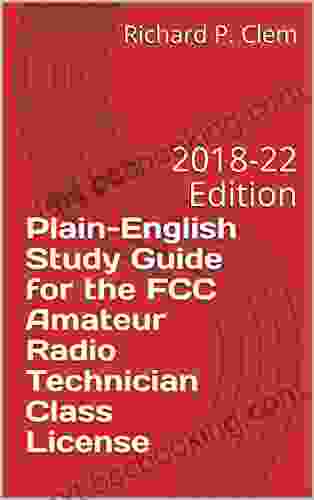
 Junichiro TanizakiBecome an FCC-Licensed Amateur Radio Technician with Our Comprehensive Study...
Junichiro TanizakiBecome an FCC-Licensed Amateur Radio Technician with Our Comprehensive Study... Vernon BlairFollow ·16.4k
Vernon BlairFollow ·16.4k Geoffrey BlairFollow ·17.2k
Geoffrey BlairFollow ·17.2k Andy ColeFollow ·17.4k
Andy ColeFollow ·17.4k Jett PowellFollow ·11.2k
Jett PowellFollow ·11.2k Ray BlairFollow ·7.5k
Ray BlairFollow ·7.5k Jorge AmadoFollow ·5.5k
Jorge AmadoFollow ·5.5k Adrien BlairFollow ·10.9k
Adrien BlairFollow ·10.9k Fredrick CoxFollow ·4.7k
Fredrick CoxFollow ·4.7k

 Larry Reed
Larry ReedGwendy's Final Task: A Thrilling Conclusion to a Timeless...
Prepare to be...
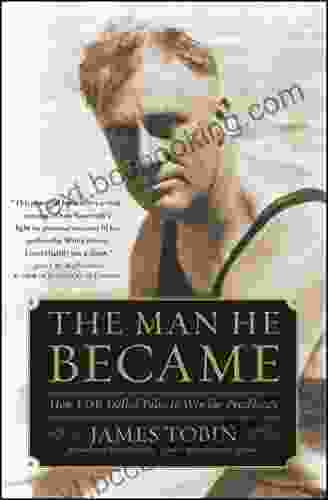
 Victor Turner
Victor TurnerHow FDR Defied Polio to Win the Presidency
Franklin D. Roosevelt is...

 Edwin Cox
Edwin CoxWinner RGS BBC Journey of a Lifetime Award: An Inspiring...
In the heart of the world's...

 Griffin Mitchell
Griffin MitchellEverything You Need to Know, You Learned From Mister...
Mister Rogers' Neighborhood was a beloved...

 Beau Carter
Beau CarterSeasons of Terror: A Spine-Tingling Odyssey into the...
In the realm of horror...
4.9 out of 5
| Language | : | English |
| File size | : | 28836 KB |
| Text-to-Speech | : | Enabled |
| Screen Reader | : | Supported |
| Enhanced typesetting | : | Enabled |
| Print length | : | 393 pages |


